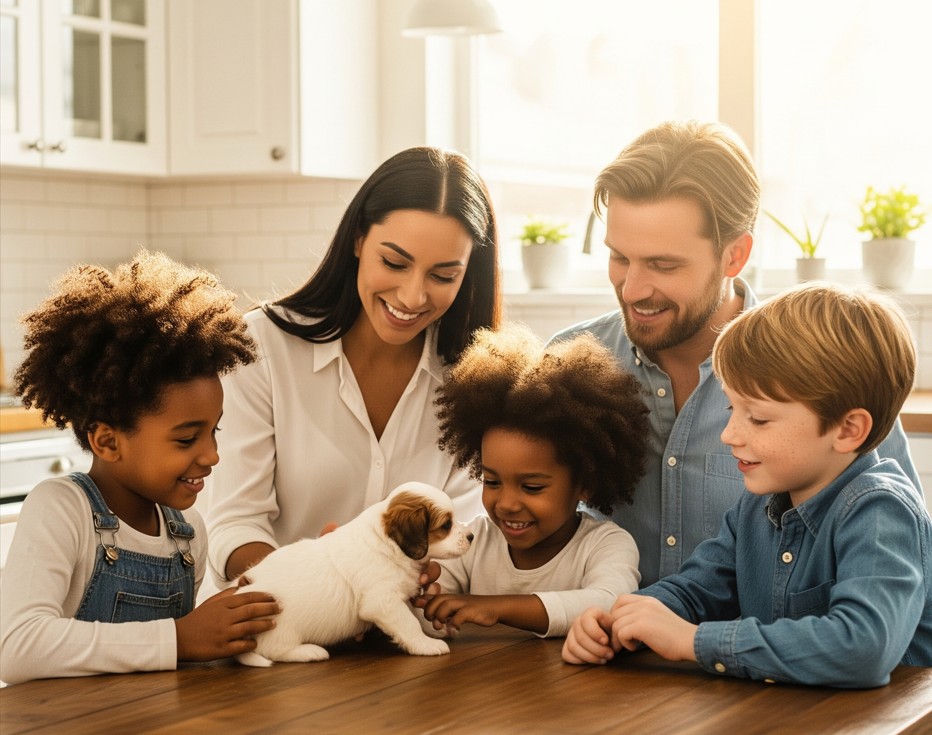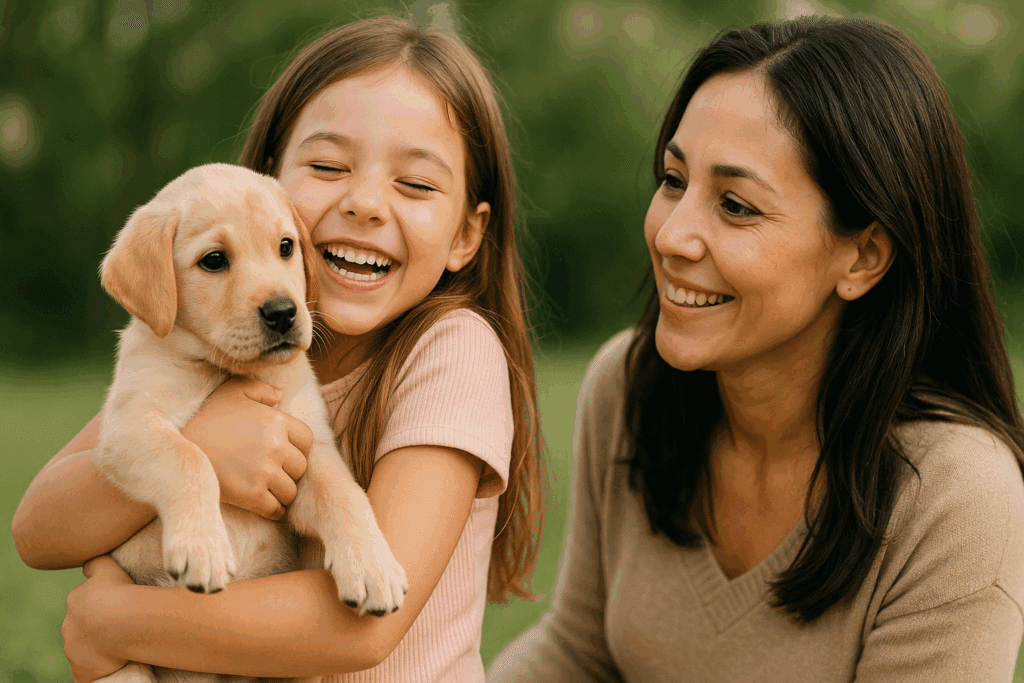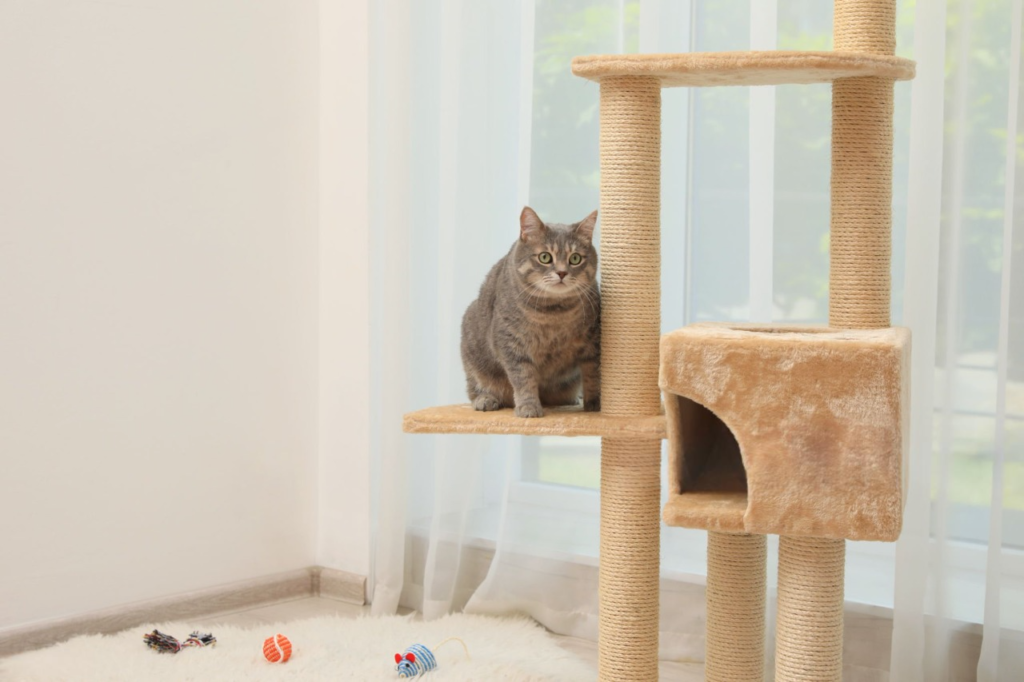Bringing home a new puppy is one of life’s most exciting moments, a whirlwind of fluffy ears, tiny paws, and happy yaps. But alongside that joy, it’s normal to feel a little nerve-wracking. You’re probably filled with excitement, and a million questions about doing everything right.

Your New Puppy’s First 24 Hours: A Step-by-Step Survival Guide
This guide is your roadmap for those crucial first 24 hours. We’ll walk you through everything, step-by-step, from the car ride home to the first challenging night. Our goal is to help you establish a calm and positive start for both you and your new family member, laying the foundation for a lifetime of happiness together. You will learn how to prepare your home, manage introductions, establish a potty routine, and survive the first night with minimal stress.
Before You Leave: Setting Up for Success
A smooth transition begins before your puppy even crosses the threshold. A little preparation goes a long way in making them feel safe and secure from the moment they arrive.
The “Puppy Safe Zone” or “Den”
Every puppy needs a designated space that is entirely their own. This “den” is not a punishment area, but a sanctuary where they can rest, feel secure, and decompress from all the new sights and sounds.
Here’s a checklist for the perfect safe zone:
- ✅ Crate: Choose a crate that is just big enough for your puppy to stand up and turn around in. It should be a cozy den, not a giant cavern. Furnish it with a comfortable bed or soft blankets.
- ✅ Water and Food Bowls: Place a fresh, full water bowl and a food bowl in or near the crate.
- ✅ Safe Chew Toys: A new puppy explores the world with its mouth. Provide one or two durable, puppy-safe toys (like a classic Kong) to teach them what is okay to chew on.
- ✅ Puppy Pads: Place a puppy pad near the crate for any initial accidents, though the main goal is to get them outside.
Puppy-Proofing Your Home: A Quick Checklist
Your home is a wonderland of new things to chew and explore. A quick safety sweep is essential.
- Secure or cover any loose electrical cords.
- Move houseplants, cleaning supplies, and human medications out of reach. Many common plants are toxic to dogs.
- Pick up any small objects that a puppy could swallow, like coins, children’s toys, or shoes.
- Use baby gates to block off any areas that are off-limits.
The Car Ride Home: Keeping it Calm and Safe
The journey home is your puppy’s very first adventure with you. The goal is to make it a positive and safe experience.
Safety First
A loose puppy in a moving car is a danger to everyone. The safest way to travel is by securing them in a well-ventilated crate or a tested puppy car harness. This not only protects them in case of a sudden stop but also prevents them from distracting the driver.

Minimizing Stress
The world is very new and big for your little one. If possible, ask the breeder or shelter for a small blanket that has the scent of their mother or littermates on it. Place this in the crate with them for a sense of familiarity. Keep the car ride quiet and calm—save the excited phone calls for later.
The Moment You Arrive Home: The First 30 Minutes
You’ve made it! How you handle these first few moments sets the tone for everything to come.
The #1 Most Important First Step: The Potty Break
Before you even step inside your house, carry your puppy directly to their designated potty spot in your yard. Put them down and wait patiently. The moment they finish their business, give them gentle, happy praise like “Good potty!” and offer a small, high-value treat. This is lesson number one of house training and is the most critical first step.
A Calm Introduction to the House
Resist the urge to invite all your friends and family over for a “welcome home” party. Your puppy is already overwhelmed. Keep the introductions low-key. Allow them to explore their “safe zone” first. You can let them wander a small, puppy-proofed area under your close supervision, but don’t give them free rein of the entire house just yet.
The First Afternoon & Evening: Establishing Routine
Dogs are creatures of habit. The sooner you start a predictable routine, the faster your puppy will feel secure and understand the rules of their new home.
Feeding Your New Puppy
To avoid a potential stomach upset, it’s crucial to stick to the same food brand and feeding schedule the breeder or shelter was using. You can transition their food later if you wish, but the first few days are all about consistency.
Potty Training Begins Now: A Simple Schedule
Accidents will happen, but you can minimize them with a frequent potty schedule. A good rule of thumb is to take your puppy out:
- First thing in the morning.
- Last thing before bed.
- Immediately after they wake up from a nap.
- About 10-15 minutes after every meal.
- At least once every hour.
Playtime vs. Naptime
Puppies need an incredible amount of sleep—often 18 to 20 hours a day! Balance short, 5-10 minute sessions of gentle play with long periods of quiet time to encourage naps in their crate. An overstimulated, overtired puppy is often a bitey and destructive one.
The First Night: Surviving the Whining
The first night alone is often the biggest challenge for both puppy and owner. Be prepared, be patient, and remember this is temporary.
Where Should My Puppy Sleep?
It is highly recommended that you place the puppy’s crate in your bedroom, right next to your bed. This is not about spoiling them; it’s about security. Being able to hear, see, and smell you helps them feel less abandoned and anxious. It also allows you to hear them when they wake up needing a potty break.
What to Do When They Cry or Whine
First, understand that some whining is completely normal. They are in a new place, alone for the first time.
- Check their needs: If they start to whine, first assume they need to go potty.
- The boring potty break: Silently take them out of the crate and directly to their potty spot. Do not play or talk excitedly. The moment they are done, praise them quietly and place them directly back in their crate.
- Do not reward crying: It’s tough, but do not take your puppy out of the crate simply because they are crying for attention. This teaches them that crying gets them what they want. As long as you know their basic needs are met, it’s okay to wait out a little bit of fussing.

Your First 24 Hours: Frequently Asked Questions
Should I let my puppy sleep in my bed the first night? It’s incredibly tempting, but it’s best to establish good crate habits from night one. A puppy who sleeps in your bed on the first night will expect to sleep there every night, which can make future training more difficult.
How much should I feed my puppy? For the first few days, strictly follow the breeder’s or shelter’s advice on food type, portion size, and feeding frequency. The guidelines on the puppy food packaging are also a good reference.
How do I introduce my new puppy to my other pets? This should be done very slowly and carefully, and it’s best to wait until after the first 24-48 hours when the new puppy has had some time to settle. Initial introductions should be in a neutral space, on-leash, and for very short periods.
Welcome to the Journey
The first 24 hours are a whirlwind of management, supervision, and new experiences. But they are also the first step in a beautiful and rewarding journey. The key is to be patient with your puppy and with yourself. Focus on establishing a predictable routine, rewarding good behavior, and above all, enjoying the process of getting to know your new best friend.
What was the most surprising part of your first day with your puppy? Share your story in the comments below!


